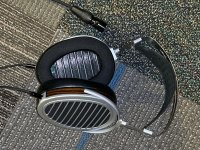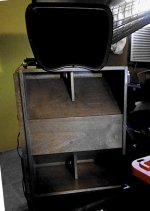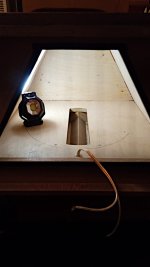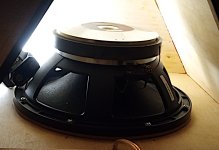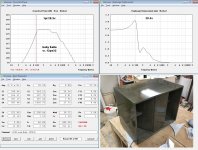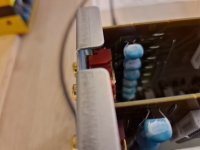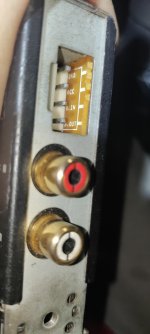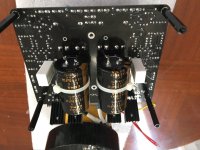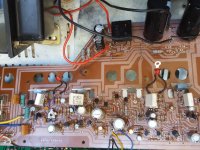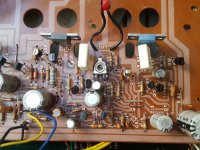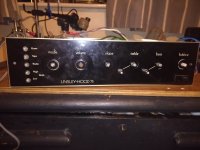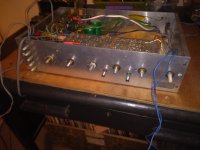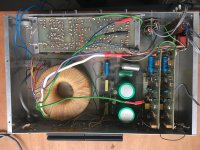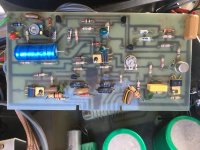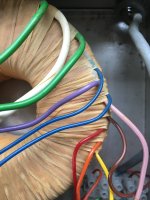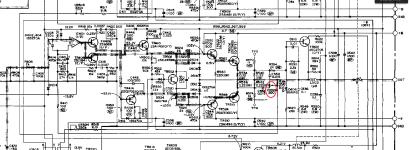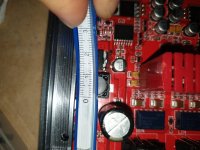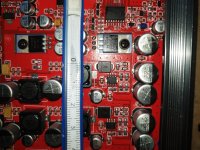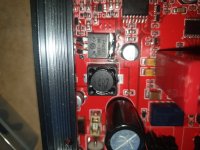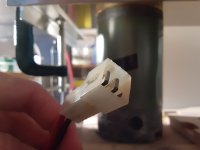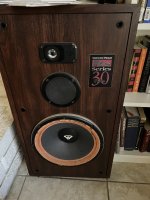This is our new single ended Mullard stereo 33 power amplifier. It has around 3.5W RMS output per channel but with suitable loudspeakers will easily fill a room with a fantastic clear presence.
We at classic-sounds.co.uk aim to bring you a range of the highest quality designs from the 50s and 60s. We start with this classic design. Originally published as a series of articles by Mullard to sell their valves, it soon became a real hit with the HiFi community.
It uses EF86 input valves and EL84 output valves. We are using an EZ81 vacuum rectifier. So a total of 5 valves.
We design and make our own transformers to the highest standards.
The two EF86 valves sit on a PCB and the EL84 valves are wired to the PCB.
We use an ALPS gain control. Output impedance is selectable as 4, 8 and 16 Ohms.
The unit is available for US or European mains voltages.
It is available now in either a ready made version or kit form.
Just head over to
https://classic-sounds.co.uk/shop
Use this code on checkout to give you £75 off PTKCRVGX
Our customers have given us fantastic feedback, here is one example from a happy customer:
"This is a tale of the unexpected and an amplifier that surpasses my expectations, and not by any small degree.
I've wanted to try a valve amp for ages, but if you don't build one yourself or rely on one of those cheap Chinese imports, then your wallet is going to take quite a hit. But then I came across this amplifier based on the Mullard 3-3 schematic.
This fairly low powered amp (not quite flea power but not much more) cost just over £800, hand built by John Wilkinson's team at Classic Sounds (Primary Windings Ltd).
I ordered just before Christmas, and told John not to worry about keeping to the usual 10 day delivery schedule, as everyone deserves a break at Christmas and New Year, but even so just a few weeks later it arrived.
My first impression was "Wow", far higher build quality that I expected, the amp really looked superb. And the transformers, well if a transformer can be described as beautiful, then these were certainly that. The amp is not overly large, a footprint about 300mm by 250mm, but reassuringly heavy, there's a lot of weight in those lovely transformers.
I hooked up the amp to my "test system" using a couple of old speakers and the source just being my phone but I was immediately worried...was the amp doing anything, completely and surprisingly quiet, no hum, no noise of any kind in fact. After a quick heart-stopping check that I'd actually connected the speakers, I selected a bit of Dominique Fils-Amie on Spotify, and experienced another Wow moment, her voice sounded incredible, much richer than with my test transistor amp, not warmer exactly, but clean, clear and beautifully lifelike vocals, and this off a phone on test speakers.
My "real speakers" in my listening room are ones I built myself, and are a single driver design based on Frugal Horns. After allowing for a few weeks for the amp to 'burn in' (I don't actually know if this makes for any real difference, though it did for the speakers, the Mark Audio drivers needed a far longer 'burn in' time than anticipated) the amp and these speakers became a match made in heaven. Midrange frequencies are a delight on these speakers anyway (and is why I'm such a fan of single driver designs) and the amp enhanced this bringing a new transparency and clarity. Highs have improved over my other amp (a Quad Vena II Play) and bass has tightened up and been enriched. The whole experience of well controlled luscious music is an absolute delight. I play almost exclusively Jazz and Classical music (especially Baroque and single instrument pieces), this amp and speaker combination produce a rich tonality with such music, there is nothing musically that disappoints.
Is there anything non-musically that could be improved - well probably, but the price would have to rise. The volume knob works great, but the knob itself could be a bit classier. I had to find a cage to go on the top to prevent my various cats from touching the valves (though I found one for just a few pounds that actually looks great), perhaps the company could supply one as an optional extra. The amp arrived set for an 8ohm speakers (suited me fine), it can be used for other impedances, but it looks a bit scary to change for those of us with sausage fingers - though I'll bet John could supply the amp ready for whichever impedance wanted. There's only one set of inputs, so if you have multiple sources either some deft changeovers are needed (the inputs are at the front of the amp so this is facilitated) or use some form of source switching box. So, for me, not much there to worry about and anyway so very picky for an amp at this price it seems rather churlish!
This is simply a superb amplifier, in fact in my view it far surpasses the price point for the quality of sound it produces, I could easily see this amp retailing for twice or three times the price. Very highly recommended."
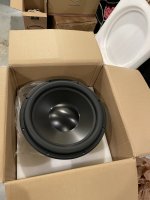
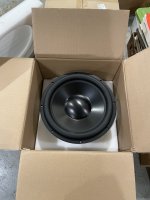
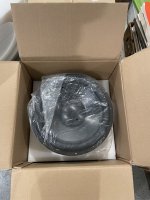

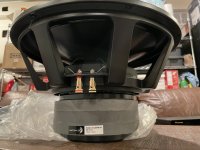
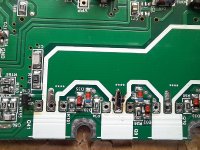
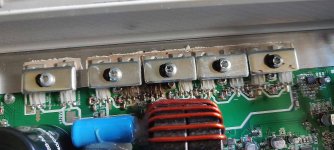
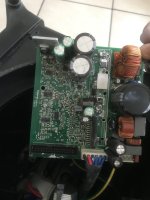
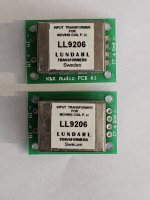
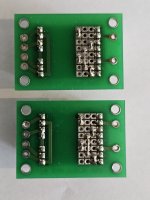
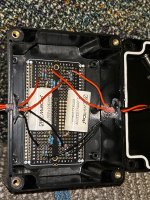
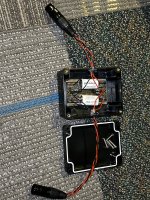
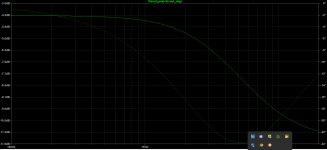
![Hi_Fi_Man_Filter_Schematic_2024-04-04_LTspice XVII - [Headphone_Filter_2.asc].png](/community/data/attachments/1202/1202981-7afcc93e1bfefba87674cf1a5ddf91a1.jpg?hash=evzJPhv--6)
